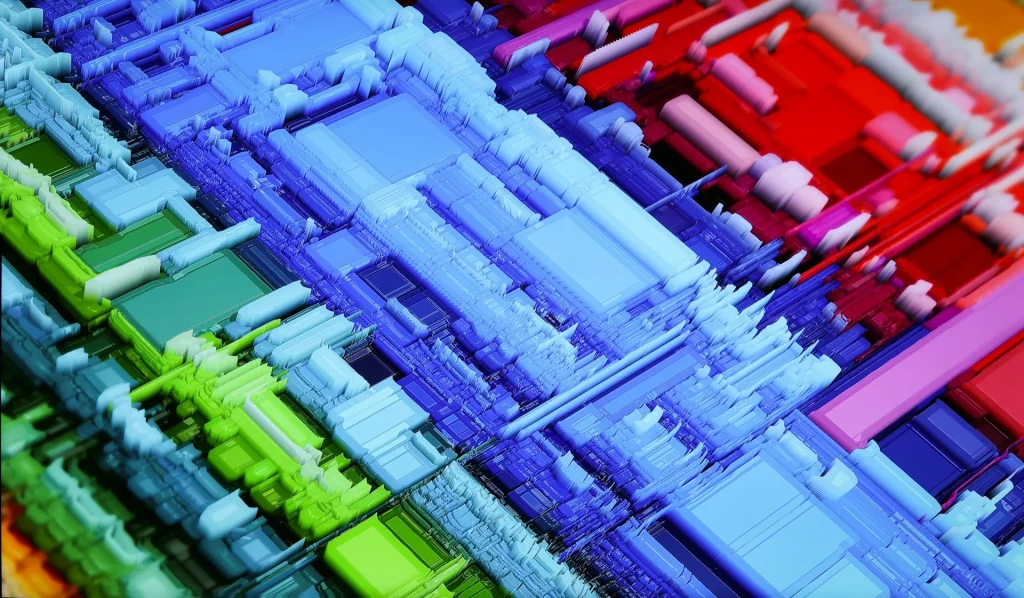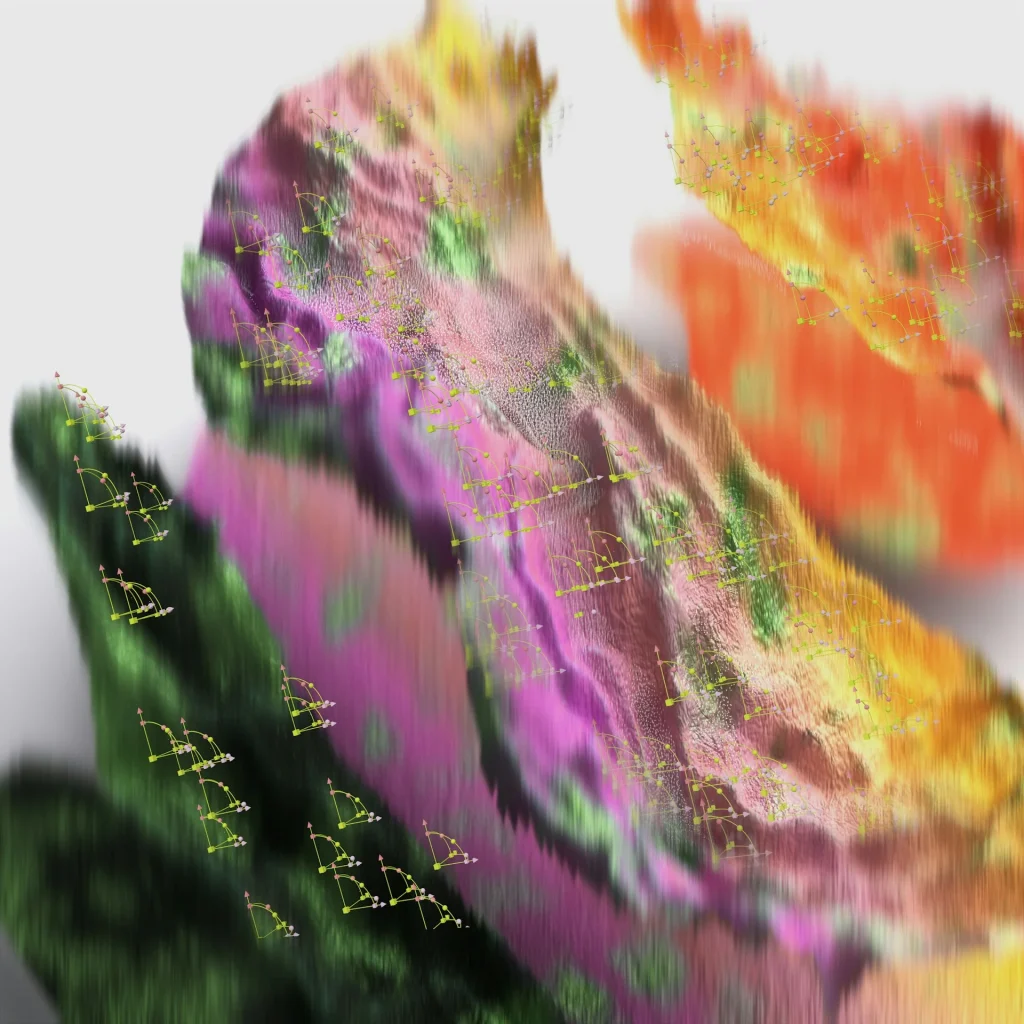Table of content
You’ve seen it. One service goes silent — and suddenly nothing flows the way it should. Logs grow quiet. Alerts don’t fire. Invoices stop sending. Tests pass, but reality doesn’t. And now you’ve got two options: trace the blast radius by hand, or take a guess and hope the client doesn’t notice.
A large codebase is an organized illusion. Docs live in a parallel universe. Architecture lives in people’s heads. Dependencies? Silent — until they break. Traditional maps show what used to be true. They never show what’s about to snap.
Now imagine a map that breathes with the code. It reads your AST. It pulls your CI logs. It tracks build paths, runtime edges, and even traffic. Every time you commit, the graph updates. No snapshots. No lag. Just a live, queryable structure that sees what breaks before you merge.
What Sets AI Dependency Mapping Apart
Most dependency tools die the moment you commit. They snapshot your code at a point in time, give you a static graph, and call it “insight.” It’s not. It’s a freeze-frame from yesterday’s refactor. And if your system’s even mildly dynamic — microservices, plugins, env-based paths — that chart becomes obsolete before the build even finishes.
AI-first tools don’t map your code. They map its behavior.
Static Charts vs. Living Graphs
Traditional dependency mapping crawls your codebase and draws arrows between files or modules. But it can’t tell you why those links exist, or what they affect downstream. And it certainly can’t show what’s about to go wrong.
By contrast, AI mapping engines help organize large codebases by starting with abstract syntax trees (ASTs), then layering in structural heuristics, CI history, test coverage footprints, and build logs. The result? A living, runtime-aware graph — not a document, but a system. Not a chart, but a constantly evolving model of your code’s intent and its blast radius.
You don’t get “module A imports module B.” You get “this pattern of use, in this context, under these flags, creates a tight coupling that affects test execution time, rollout speed, and rollback risk.” That’s not visualization, but engineering telemetry.
Runtime Signals on the Map
This is where static tools fall silent. They don’t know which functions get invoked 10,000x per hour vs. which ones never leave staging. They can’t see what breaks silently during a rollback. They don’t capture hot paths, error drift, or configuration volatility.
Modern AI mapping tools ingest runtime signals — logs, traces, test results, traffic data — and tie them back to the graph. That method on line 42 isn’t just “used by another class.” It’s invoked by a feature toggle that’s only active in three edge environments, and it silently fails when a fallback kicks in.
You can’t see that in your IDE, but the graph does.
That’s how slow rollouts, flaky features, and invisible bugs start showing up in bright color — weeks before users complain.
Click-Through Visual Exploration
Here’s where it gets real. The map isn’t just drawn — it’s navigable. You click a method, and you see what calls it. Click again, and you see its test coverage. Click again, and you get CI timings, rollback history, and code owner info.
It’s not a “dependency tree.” It’s an explorable system of intent — anchored in your architecture, test suite, delivery pipeline, and error logs. This isn’t just about knowing what connects to what. It’s about knowing what’s safe to change — and what isn’t.
The next time someone asks, “Is it safe to remove this?” — you don’t guess.
You trace.
AI-driven graphs extend architectural resolution beyond what static models reveal.
They reflect actual behavior as it evolves, aligning structure with execution, enabling continuous dependency tracking across boundaries, and preserving functional context throughout the delivery lifecycle. Instead of relying on stated intent, they continuously surface the real shape of the system as it shifts under development pressure.
This enables earlier reasoning about risk, deeper traceability across teams, and more grounded decisions at the moment they matter — before changes propagate.
Benefits That Move the Needle
Blind-Spot Elimination
AI-assisted graphing extracts implicit coupling beyond what static parsing surfaces.
Cross-cutting concerns — like shared test scaffolding, runtime flags, misaligned serialization layers — form weakly expressed dependencies that rarely show up in architectural overviews. These are often introduced by macros, reflection, container bindings, or dynamic configuration loaders.
Using multi-source ingestion (ASTs, logs, traces, test outputs, runtime telemetry), LLMs expose latent paths that weren’t explicitly declared. Over time, the graph forms a multi-layered representation: lexical, semantic, and operational.
The practical outcome is a source of truth that reveals dependencies not captured in traditional lineage tools, including between test harnesses and application logic, build scripts and runtime environments, or optional modules and critical side-effects.
Failures often propagate across service boundaries in non-obvious ways.
Conventional stack traces show symptoms; they don’t reveal contributing system states or upstream context.
With AI-assisted dependency graphs, the system dynamically aggregates:
- Call sequences from production traces.
- Historical failure patterns.
- Commit metadata from the nearest change window.
- Test coverage deltas relevant to affected nodes.
This enables surgical isolation of faults — not just by error type, but by probable origin chain.
It also improves blameless postmortems by presenting incident causality across:
- Shared libraries and their consumers.
- Feature toggles that altered runtime conditions.
- Recently touched but indirectly impacted components.
This dramatically reduces time spent moving through triage, handoffs, and root cause exploration. For teams running weekly releases or working in high-churn pipelines, this insight closes feedback loops before customer-facing symptoms appear.
Predictive Impact Forecasting
The ability to forecast downstream consequences before code is merged redefines how technical risk is assessed.
Instead of relying on code familiarity or tribal heuristics, engineers interact with a graph-informed model that simulates ripple effects from planned changes.
This simulation includes:
- Downstream services are affected by data shape mutations.
- Integration tests that should be re-executed.
- Deployment pipelines and their rollout sequences.
- Service-level objectives are likely to intersect with the change.
What makes this powerful is not the suggestion itself — it’s the alignment between structural mapping and runtime observability.
The graph acts as a precursor to both test selection and stakeholder notification. For regulated systems, it can identify artifacts that require re-approval. For modular teams, it flags other teams whose release timelines might be affected.
This forecasting is particularly effective in:
- Monorepos where package boundaries are porous.
- Domain-driven environments with event-based async comms.
- Data-intensive workflows where schema drift has business implications.
- Forecasting enables governance to coexist with speed, without inserting new bottlenecks.
AI dependency mapping does more than surface hidden lines between components.
It shifts the decision latitude higher up the delivery chain — toward earlier fault detection, clearer stakeholder alignment, and leaner governance. The practical effects are not just faster triage or safer merges, but tighter architectural integrity under continuous change.
For engineering leaders, this means fewer tradeoffs between speed and confidence.
Instead of reacting to runtime surprises, teams gain a proactive posture: one where structural risk becomes observable, measurable, and — over time — automatable.
Hidden Leverage: What the Graph Actually Enables
Most teams approach dependency mapping as a cleanup task. But when AI builds a living, slice-aware graph, the output shifts from reference chart to tactical accelerator. Here’s what that unlocks behind the scenes.
Soft Coupling Surfaces Engineering Truth
The AI graph doesn’t stop at imports or call stacks. It reads signals of soft dependency: co-change frequency, naming patterns, commit sequences, test overlaps, and even shared telemetry events. These are the fibers that reveal what truly moves together in production — regardless of what architecture diagrams say.
Soft coupling graphs allow:
- tighter, cleaner decomposition into slices;
- better ownership boundaries;
- earlier signal on mutation hotspots.
What emerges is a refactoring compass grounded in runtime reality — not stale diagrams.
Critical Aspects: Creation, Setup, Integration
Code-and-Config Ingestion Pipeline
The graph begins at ingestion. Source code, interface contracts, environment configs, and build metadata enter as raw material. Parsing engines extract syntax trees, dependency statements, and artifact lineage. From there, boundary definitions form around real usage — class, module, package, service, monorepo — whichever layer yields meaningful boundaries for operational alignment.
Infrastructure-as-code and build orchestration files (Terraform, Helm, CI specs) feed deployment-level structure. By combining version control history with build events, the graph surfaces both declared and emergent couplings — including those that stretch across repos, deploy targets, or delivery teams.
Each edge in the graph gains weight from how often it’s exercised, how deeply it’s coupled, and how recently it changed.
Telemetry Enrichment Loop
Execution flow sharpens structural inference. Runtime traces, test coverage artifacts, performance logs, and CI telemetry serve as post-facto validators for graph edges. These enrichments reveal high-frequency paths, critical junctions, and “silent” dependencies — those never declared but always activated under load or business-critical scenarios.
Instead of flattening runtime into pass/fail metrics, this loop attaches semantic weight to specific nodes and links. A config value that changes downstream behavior, or a utility method that appears in every hot path, becomes visible at a glance — not as noise, but as an operational dependency with delivery consequences.
Continuous Refresh Cadence
The map recalibrates itself on every material event. A pull request, a test failure, a schema migration — each one triggers delta parsing and realignment. Nothing depends on manual resyncs or weekly cron jobs.
In monorepos, the system scopes updates to touched segments while preserving historical edge weight. In polyrepo environments, it federates across pipelines and uses commit ancestry to propagate updates with minimal lag.
This refresh loop gives teams a high-fidelity representation of their codebase’s structure at any point in the sprint, during branching, after a merge, or while staging a rollout.
A dependency map earns its value through precision, context, and change-awareness.
Without fine-grained ingestion, it captures shape but misses behavior. Without telemetry, it maps structure but skips flow. Without continuous refresh, it decays the moment the codebase shifts.
When all three layers work in tandem, the graph becomes a living system boundary, grounded in code, enriched by runtime, and tuned to the pace of delivery. It serves not as a diagram to review, but as an interface to navigate architecture under pressure.
Future Outlook for AI Dependency Mapping
The graph becomes more than a mirror. It defines where the next slice begins, how it propagates, and what must stay intact. AI systems no longer operate in the abstract — they bind directly to real architectural edges. Every node carries a delivery context. Every link embeds business logic, runtime pressure, and test lineage. The result: a system that doesn’t just observe change — it governs it.
Self-Healing Delivery Pipelines
As the graph becomes a primary interface between source code and runtime, it starts playing a more active role in delivery orchestration. Pipelines no longer act on fixed paths — they resolve dependencies in real time, validate slices against structural context, and short-circuit execution when conflict patterns emerge.
Graph-aware agents detect circular dependencies, cross-boundary leaks, or unstable entry points before rollout begins. Instead of reacting post-deployment, pipelines enforce preconditions tied to architectural safety. Teams retain autonomy, but the pipeline aligns every delivery with system shape — automatically.
This leads to self-healing behavior: when a structural rule is violated, the graph halts propagation, surfaces the root issue, and provides a context-aware rollback path — based on behavioral deltas, not string matches.
Explainable Graphs for Audit Readiness
Dependency maps gain new significance in regulated domains. Once enriched with behavioral history, test lineage, and CI/CD triggers, the graph becomes an audit artifact. It explains why a module behaves as it does — not only by design, but in execution over time.
Explainability no longer means “who wrote this,” but “what changed, when, and what it affected.” Risk exposure can be modeled upstream; test coverage tied to critical junctions; and version lineage shown per module, function, or API contract.
Instead of assembling compliance after the fact, systems can operate with audit visibility embedded from day one.
Hybrid Static + LLM Agents
Large Language Models will not replace graph construction, but they will augment its traversal and interpretation. Where static maps define structure, LLM agents supply usage intent, naming rationale, and configuration heuristics.
A query like “What services write to this table and under what conditions?” becomes resolvable — combining structured graph traversal with semantic summarization of adjacent code, test descriptions, and git commit messages.
This hybrid unlocks a new class of interface: engineers explore architecture not through file trees or dashboards, but by asking grounded, operationally relevant questions. The system responds in architecture-native terms, rooted in code, observed behavior, and current delivery cadence.
AI-powered dependency analysis evolves into a foundation for operational reasoning, guiding architecture, testing, and rollout decisions. As graphs begin to capture behavior, delivery context, and system intent, they transition from passive reflection to active infrastructure. Pipelines consult the structure before triggering rollout. Audit tools extract lineage from relationships. Engineers surface answers directly from the map — framed by code, enriched by telemetry, and validated by observed patterns.
This trajectory leads to a new interface layer across systems: dependency graphs that mediate change, enforce structure, and serve as a single source of architectural truth — accessible both to agents and to humans.
Developer Experience & Trust in the Map
Mapping is the backbone of the modernization backlog. Every slice in the modernization stream begins with a trusted map. Built using Nx, the dependency graph anchors each issue point to a specific code surface, integration zone, or architectural seam. These anchors aren’t abstract — they shape the very backlog that drives step-by-step modernization.
The map governs more than order. It encodes scope boundaries, freeze windows, and links to shared modules. That precision turns the graph into a shared language for architects and implementers — not a static diagram but a live plan in motion.
It’s this structural confidence that makes modernization auditable, estimable, and resilient. Developers trust the map because it reflects code as it runs — and that trust compounds with every release slice successfully deployed against it.
Navigable Slice Maps with Embedded Context
Static diagrams fade. Interactive graphs stay in flow. Engineers scan the map like a living interface — clicking through dependency nodes, surfacing context from commits, changelogs, test evidence, and CI telemetry without leaving the graph. The map becomes a workspace, not a diagram.
Instead of reverse-engineering risk manually, engineers jump node-to-node, following coupling edges and hierarchy lines. They see what’s tested, what’s released, and what’s pending. And when each node reflects real runtime behavior — not just static links — the graph stops being passive. It starts answering engineering questions faster than search.
CI-Backed Trust Signals
Each node in the graph carries test lineage and release verification. Once a slice passes quality gates, that confidence is embedded. Engineers working downstream see whether upstream modules were touched, how they behaved in staging, and whether rollback was ever triggered.
This provenance doesn’t just help in diffing — it anchors trust. A graph that reflects actual delivery behavior becomes more than a visualization layer. It evolves into a reputation system for each unit of code.
Feedback Loop from Deployment to Map
The graph is refreshed not on a timer, but on impact. New dependencies appear when real-world signals shift — a module drifts in latency, a data call fails silently, a fallback path gets hit in 3% of flows. That behavioral feedback gets annotated onto the map, giving engineers situational awareness in real time.
Instead of relying on tribal knowledge or Slack threads to trace regressions, the graph lights up areas where operational behavior diverged from spec. That difference becomes actionable — directly from the interface engineers already use.
Cost/Complexity Tradeoffs
Compute Pressure from AST + Runtime Streams
Running AST parsing and telemetry correlation in large codebases continuously exerts a measurable load on compute and memory resources. The initial traversal of poly-repo environments requires parallel parsing of thousands of source units — each turned into structural and semantic tokens, then linked through inter-service contracts and runtime traces. Even with optimized parsers and graph diffing, CPU-bound workloads spike during repository-wide updates or high-churn branches.
Memory pressure mounts in proportion to graph resolution. Fine-grained mapping, down to method calls and indirect side effects, demands in-memory graph expansion and short-term state caching across CI cycles. Engineering teams should budget for burst scenarios triggered by CI storms or developer surges, especially when telemetry data streams in from APM agents, profilers, and test runners in parallel.
Integration Drag in Complex Stacks
Embedding AI-assisted mapping into existing delivery flows introduces an observable integration cost. Graph pipelines must ingest pre-commit signals (lint, static analysis), CI-stage artifacts (test traces, coverage maps), and post-deploy events (canary feedback, live metrics). Each step hooks into a different layer, requiring adaptation across monolithic and modular stacks.
In practice, the pipeline touches GitHub/GitLab, CI/CD orchestrators, observability backbones, and sometimes security scanners or SAST tools. Every connector introduces handshake delays, auth/secret flows, and backpressure risks. The more fragmented the environment, the more edge cases require custom handling.
Latency and Indexing Tradeoffs
Large graphs demand tradeoffs between indexing latency and access speed. Cold-start indexing across tens of thousands of files — even with diff-based techniques — takes minutes to converge. While partial refreshes help during hot path development, deep queries across service boundaries and runtime joins can slow down under real load.
Engineering teams working with microservice sprawl, monorepos, or hybrid architectures must benchmark map sync latency against commit frequency, rollout velocity, and merge queue pressure. In low-latency pipelines, stale graphs can quietly distort impact forecasting. In ultra-fast trunk-based flows, indexing cost may turn into a blocker if left unbounded.
Closing Note
Mapping graphs at scale reshapes how teams reason about code — but the architectural and operational costs are real. Precision comes with a price: in computation, in integration time, and in operational complexity. Teams adopting this model should treat the graph pipeline as a first-class system — not a black box — and budget accordingly. Balancing granularity, refresh rate, and latency windows is key to sustained value.
Sum Up
AI-powered dependency mapping creates architectural leverage at scale.
In large systems, structure rarely aligns with how change flows. What gets committed doesn’t always reflect what gets affected. AI shifts this asymmetry — by capturing dependencies as they behave in real delivery, not just as they’re declared in code.
It ingests static structure, watches runtime signals, tracks merge dynamics, and surfaces functional proximity where boundaries drift. When integrated into the loop — from pull request to rollout — the graph becomes a navigable layer for reasoning, planning, and risk isolation.
This isn’t tooling. It’s groundwork for sustainable velocity, where system understanding compounds with each change, and delivery becomes traceable by design.
As AI dependency graphs start powering task planning, change validation, and risk profiling, they grow into a systemic accelerator. Teams gain not just visibility, but fluency — the ability to read and reason across code, config, telemetry, and behavior in one place.













